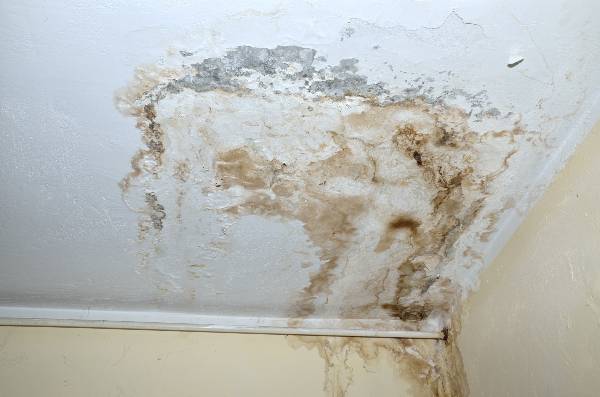We have stumbled upon this post relating to Detecting hidden plumbing leaks below on the net and think it made sense to discuss it with you here.

Early detection of dripping water lines can alleviate a potential calamity. Some tiny water leaks may not be visible.
1. Examine the Water Meter
Every residence has a water meter. Checking it is a proven way that helps you uncover leakages. For starters, turn off all the water resources. Make certain no person will purge, make use of the faucet, shower, run the cleaning machine or dishwasher. From there, most likely to the meter as well as watch if it will change. Given that nobody is using it, there should be no activities. If it moves, that suggests a fast-moving leakage. Similarly, if you identify no changes, wait an hour or 2 and also examine back again. This means you may have a slow leakage that might also be underground.
2. Examine Water Consumption
Examine your water bills and track your water usage. As the one paying it, you must notice if there are any type of discrepancies. If you detect sudden changes, regardless of your intake being the same, it suggests that you have leakages in your plumbing system. Bear in mind, your water costs should fall under the very same range on a monthly basis. A sudden spike in your bill indicates a fast-moving leakage.
On the other hand, a consistent boost monthly, even with the very same routines, reveals you have a sluggish leak that's likewise slowly rising. Call a plumber to thoroughly check your property, especially if you really feel a cozy area on your floor with piping underneath.
3. Do a Food Coloring Test
When it comes to water intake, 30% comes from toilets. If the color somehow infiltrates your dish during that time without flushing, there's a leak between the container and bowl.
4. Asses Exterior Lines
Do not forget to check your exterior water lines also. Ought to water seep out of the link, you have a loose rubber gasket. One little leak can waste bunches of water as well as increase your water bill.
5. Assess the situation and check
Property owners need to make it a habit to examine under the sink counters and also even inside cupboards for any type of bad odor or mold growth. These 2 warnings suggest a leakage so timely focus is required. Doing regular assessments, also bi-annually, can conserve you from a significant trouble.
Inspect for stainings and deteriorating as the majority of appliances and pipes have a life expectations. If you think dripping water lines in your plumbing system, do not wait for it to escalate.
Early discovery of leaking water lines can reduce a prospective catastrophe. Some tiny water leakages may not be visible. Inspecting it is a proven way that helps you uncover leaks. One small leakage can waste loads of water and surge your water expense.
If you suspect leaking water lines in your plumbing system, don't wait for it to intensify.
How to Know If Your Home Has a Hidden Leak
Water Meter Reveals Inexplicable Water Usage
If you’d like to test whether or not there’s a leak somewhere in your home, you can do this using your water meter. Here is how to conduct the test:
Don’t use any water in your home for at least 30 minutes; this also means not turning on faucets or water-using appliances.
Go outside, and check your water meter for activity.
If your water meter shows that there was activity, even though no one was using any water, this proves that there is a leak in your home.
Visible Mold or Mildew Growth
Leaks behind walls create moist, dark environments that allow mold and mildew to grow and thrive. Eventually, you might see mold growth forming on the wall closest to a hidden leak.
If mold is growing in an area that receives a high amount of moisture, such as a bathroom, it may simply be an indication that better ventilation is needed. However, if you see mold growth on a wall or the ceiling in an area where you would not expect, you probably have a hidden leak.
Musty, Mildew Odor
Sometimes you might not be able to see the mold or mildew that is growing as a result of a leak. However, the smell can give the problem away just as easily. If you catch a whiff of something musty, there’s a good chance that old water is collecting somewhere in your home that you can’t see.
Stained/Warped Walls, Ceilings, or Floors
When your home soaks up water, a variety of red flags can become visible, including ceiling stains, bubbling drywall, warped walls, and sagging floors. While these issues can be caused by excess humidity, they can also be signs that a pipe or plumbing connection has started leaking behind your walls.
Inexplicably High Water Bill
After a while, you get a general sense for what your water bill should be. If you own a pool or sprinkler system, your bill will tend to be higher during summer. However, if you receive a water bill that seems especially high, and you can’t figure out what caused it, then you may have a hidden leak somewhere that’s increasing your bill.
https://www.plumbingjoint.com/blog/2019/july/how-to-know-if-your-home-has-a-hidden-leak/

I was shown that article on Leaking water lines from an associate on our other website. So long as you appreciated our article please remember to share it. Thanks so much for your time spent reading it.
Comments on “6 Ways to Discover Concealed Water Leaks in Your Residence”